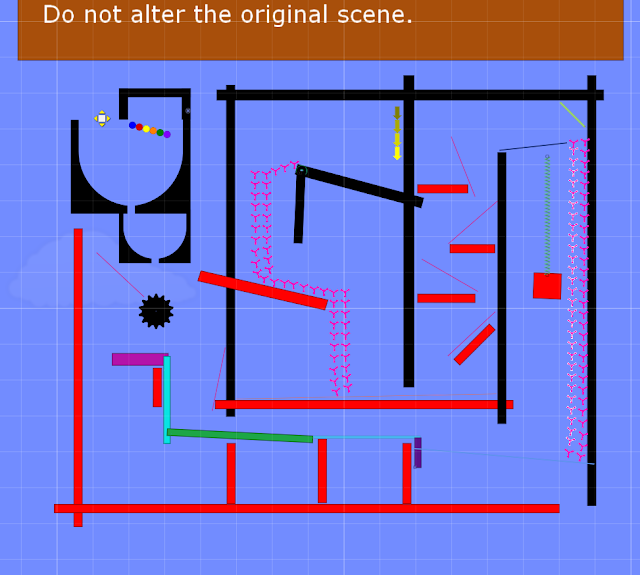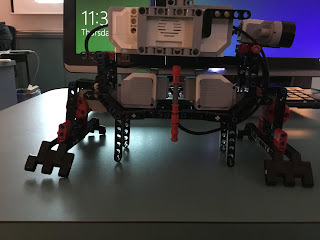1. During the unit, I accomplished many things, from innovations on basic designs to
problem solving on questions assigned. During the Swift Playgrounds unit, I problem solved and overcame problems quickly and efficiently. This is shown on the last day of the Swift Playgrounds unit, where I created an algorithm to successfully traverse the terrain.
During the LEGOmindstorms unit, I built built the Scorpion Unit and successfully ran all of the programs. All of the tests ran as expected.
During the Animal Rescue unit, I innovated and tested different designs in order to complete the tests. I had to find a way to attach the legs, then later I innovated in order to improve the process of walking for the turtle.
2. During the unit, I learned many things about coding and engineering. When we started coding in the Swift Playgrounds unit, I learned how to identify and create algorithms. This proved helpful during the LEGOmindstorms unit, where I had to implement my algorithms onto my machine, where I learned about the importance of hands on work. During the last unit, where we created a turtle, I learned how to implement the knowledge that I had previously learned, in order to create a working robot.
3. My favorite part about working with LEGOmindstorms was innovating and improving the design of the turtle. This allowed my creative side to flourish, and was a great learning experience.
4. The most difficult part in building and coding the turtle was attempting to synchronize the legs. It took me lots of time and effort, but by looking through previous lessons, I was able to synchronize the legs.
5. In the entire unit, my biggest challenge was working in the parameters that were given to me in each problem. I overcame them by looking at the functions they gave me, then creating a mental map of what I need to code in order the complete the level.
6. If I could re-do the entire unit, I would create functions for each level. Not only does this make the coding faster, but it cleans the code up and makes it easier for others to read my code. Another thing I would do is put comments in my code. It is a relatively small thing, but it makes looking back at your code infinitely easier, as well as making your code accessible for others.
7. Given the opportunity, I would love to code more. It has been my favorite unit in IT this year, as well as last year. I do not care much about on what coding program I would learn on, but I would love to learn more code.
8. Swift Playground teaches you swift, the programming lanugage that Apple wrote. So, when you write code, you are writing in Swift.The function runFast would be written as such:
func runFast() {
moveForward()
moveForward()
}






















